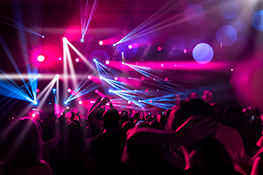Stage Lighting for Beginners: A Simple Step-by-Step Guide
Understanding the Basics of Stage Lighting
So you’re ready to dive into the captivating world of stage lighting? Fantastic! Whether you’re a budding theatre director, a musician setting up a gig, or simply curious about the magic behind stage illumination, this guide will walk you through the essentials. We’ll demystify the technical jargon and provide a practical, step-by-step approach to lighting your stage effectively.
Before we get started, it’s crucial to understand the fundamental elements: light sources, fixtures, gels, and control systems. Each plays a vital role in creating the desired mood and visual impact. Let’s explore each in detail.
Choosing Your Light Sources: LEDs vs. Halogen vs. Incandescent
The type of light source you choose significantly impacts your budget, energy consumption, and the overall quality of your lighting. Here’s a quick comparison:
- LED (Light Emitting Diodes): LEDs are increasingly popular due to their energy efficiency, long lifespan, and vibrant color rendering. They offer superior control over color temperature and intensity, making them ideal for precise lighting design.
- Halogen: Halogens provide a bright, warm light, but consume significantly more energy than LEDs and have a shorter lifespan. They are generally less expensive upfront but more costly in the long run.
- Incandescent: While providing a classic warm glow, incandescent bulbs are the least energy-efficient option and have a very short lifespan. They are rarely used in professional stage lighting anymore.
For beginners, LEDs offer the best balance of cost-effectiveness, performance, and longevity. However, the initial investment might be slightly higher.
Essential Stage Lighting Fixtures: Types and Functions
Various fixtures serve different purposes on stage. Knowing their functions is key to effective lighting design:
- Fresnel: Produces a soft, diffused light, ideal for washes and backlighting.
- Par Can: Offers a focused beam, suitable for highlighting specific areas or creating sharp accents.
- Ellipsoidal (Profile): Provides a highly controlled, sharp beam with adjustable shutters and gobos (metal templates that create patterns), making it perfect for precise effects and gobo projection.
- LED Panels: Versatile and efficient, offering various color options and soft light distribution, useful for backdrops and general illumination.
Working with Gels: Color and Effects
Gels are thin sheets of colored plastic placed in front of lighting fixtures to modify the color of the light. They are crucial for setting the mood and atmosphere. Experimenting with different gel colors is essential for creating the desired aesthetic.
Understanding the color wheel and how different colors interact is a key skill in stage lighting. Consider using color temperature charts to ensure consistent and visually appealing lighting schemes.
Controlling Your Lights: A Simple Lighting Console
A lighting console, even a basic one, allows you to control the intensity and color of your lights, enabling you to create dynamic and engaging lighting cues. Many entry-level consoles offer intuitive interfaces, making them perfect for beginners. Start with a simple console and gradually expand your setup as your skills grow.
Safety First: Handling Stage Lighting Equipment
Always prioritize safety when working with electrical equipment. Ensure all connections are secure, use appropriate safety cables, and never touch exposed wiring. Consult the manufacturer’s instructions for each fixture and always operate within the recommended voltage and wattage.
Step-by-Step Lighting Design Process
- Identify your needs: What is the purpose of your lighting? What mood or atmosphere are you trying to create?
- Plan your lighting plot: Sketch a diagram of your stage and the placement of your lighting fixtures.
- Choose your fixtures and gels: Select the appropriate fixtures based on your needs and choose gels to create your desired color palette.
- Set up your lighting: Securely mount your fixtures and connect them to your power source and lighting console.
- Program your cues: Use your lighting console to program the different lighting states (cues) for your performance.
- Test and refine: Run through your lighting cues to ensure everything works as planned and adjust as needed.
Conclusion: Embrace the Creative Process
Stage lighting is a powerful tool for enhancing storytelling and creating memorable experiences. Don’t be afraid to experiment, explore different techniques, and let your creativity shine! With practice and patience, you’ll master the art of stage lighting and bring your productions to life.
Visit our website for a wider range of stage lighting equipment and accessories!


 Auditorium Construction Services
Auditorium Construction Services 